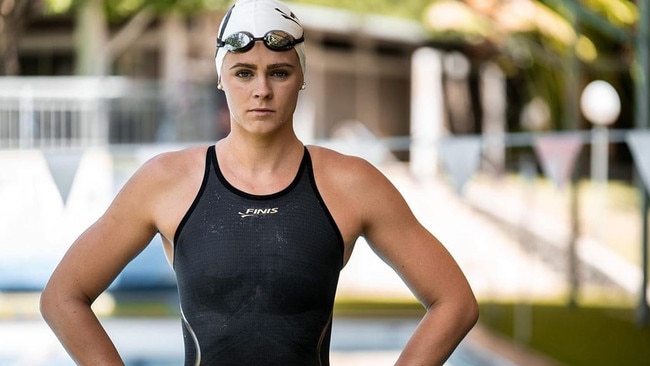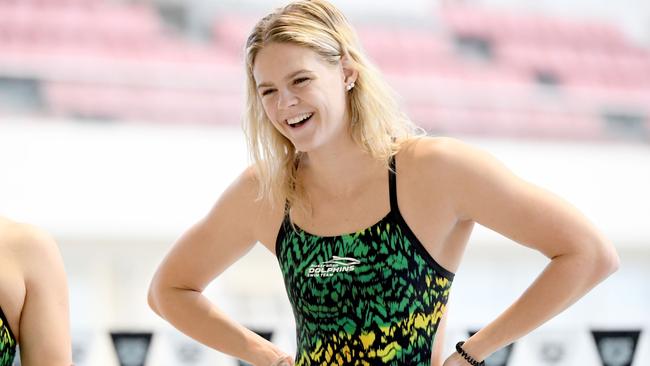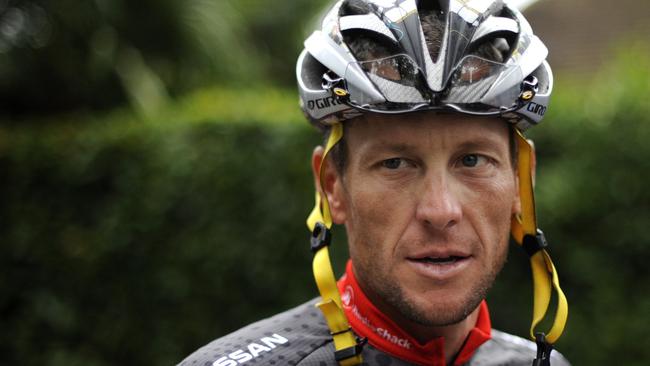Shayna Jack drug ban: Lawyer says Australian swimmer’s case exposes ‘sham’ system
The lawyer who brought down Lance Armstrong says international sport’s drug testing system is hopelessly flawed when Shayna Jack cops her whack and the big fish get away.

Olympics
Don't miss out on the headlines from Olympics. Followed categories will be added to My News.
In her quest to prove she wasn’t a drug cheat, Shayna Jack chopped off some of her hair and sent the strands in a sealed envelope to a forensic laboratory in France.
Microscopic traces of drugs can be detected in human hair for up to a year after they disappear from blood and urine, so if Jack was lying about being innocent, her blonde locks would give her up.
The results came back clean but weren’t considered as evidence because posting samples in the mail doesn’t meet the standard needed for the chain of custody.
So Jack underwent a full body scan, which she was told would show whether there were any changes to her body indicating drug use.
Again, the results showed no signs of cheating, but it was a futile exercise.
Under the existing regulations, where athletes are responsible for whatever is found in their system, the onus was on her to identify the source of the tiny traces of ligandrol that were found in the Queensland swimmer’s sample following an out-of-competition test at a training camp in Cairns on 26 June, 2019.
One of Australia’s rising stars in the pool, Jack left no stone unturned in trying to figure out where the traces came from, ordering tests on the foods and drinks she had consumed as well as the cosmetics and nail polish she had worn. She even sent her teeth whitener off to a laboratory, but all to no avail.
Kayo is your ticket to the best sport streaming Live & On-Demand. New to Kayo? Get your 14-day free trial & start streaming instantly >

But after 17 months without funding and having to pay her legal fees, she’s been left broke.
In the weeks immediately after news of her positive test was revealed, some of her sponsors began to bail on her.
The Cali Condors, one of the eight franchises entered in the lucrative professional International Swimming League, called to say she wasn’t able to compete under their one strike and you’re out policy.
Facing a six-figure debt, she’s been able to recoup some of her losses by securing appearances on Seven’s SAS survivor and doing photo shoots and promoting a local Jeep saleyard in Brisbane but she’s still in a deep financial hole.
Her failed efforts to locate the source weren’t a complete waste of her time and money though.
Alan Sullivan QC, the sole arbitrator who sat in judgment of her two-day appeal to the Court of Arbitration for Sport, took note of the extreme lengths she had gone to and also that all her previous tests had come back clean.
For the lone adverse sample she returned, the concentration levels of ligandrol were so low that they were defined as “pharmaceutically irrelevant” and after seven weeks of deliberating, CAS announced its ruling.
The good news for Jack was the arbitrator believed her, finding: “on the balance of probabilities, that Shayna Jack did not intentionally ingest ligandrol and considered that she had discharged her onus of proving that the anti-doping rule violation was not intentional.”
The bad news was he still recorded a doping violation against her and imposed a two-year suspension
For the woke mob who wanted someone to pay for all the Australians who pointed the finger of blame at China’s Sun Yang while Jack’s positive test was kept hidden, she deserved everything she got.
But for critics of the current regulations, the system is hopelessly flawed because while it’s catching more tiddlers, the bigger fish are still getting away.
When Russia’s Yulia Efitmova tested positive for anabolic steroids in 2014, she was banned for just 16 months and allowed to compete at the 2016 Rio Olympics. When Sun tested positive to a banned stimulant, also in 2014, he was given three months, which he served in secret.
“That’s a sham way to run a program and bad for athletes, but that’s certainly one reason to keep the rule where it’s at,” Travis Tygart told The Saturday Telegraph.
“It’s the ultimate bureaucracy just without care or real concern of the effectiveness of the program but just racking up positives.”
Tygart is anti-doping’s alpha angler. He’s the American lawyer who busted Lance Armstrong after the testers had failed to nab cycling’s most audacious cheat.
The chief executive of the United States Anti-Doping Agency (USADA), Tygart received three death threats in his long pursuit of Armstrong.
One was from a crazed urologist who threatened to nail Tygart to a tree and skin him alive while forcing him to watch his children being castrated.
Tygart didn’t flinch from his pursuit of Armstrong and couldn’t ever be accused of wavering in his crusade to catch cheats, but he’s deeply alarmed by the current regulations and has advocated for urgent reform.
In the US alone, there have been 26 separate instances since 2016 — not including supplements — of athletes accidentally testing positive, including the farcical case of cyclist Carl Grove.
Grove was deemed to have committed a doping violation after he tested positive to traces of steroids he unknowingly consumed from eating chicken liver at a diner on the eve of his race — where he was the only entrant in the 90-94 age group.
USADA gave the octogenarian a public warning — the lowest sanction available — and has declined to issue bans to other athletes that have fallen foul of the rules through no fault of their own.

Another of the athletes USADA didn’t suspend was Madilyn Nickles, who tested positive to the same muscle builder that Jack got two years for.
A Californian-based softballer, Nickles became contaminated from having sex with her boyfriend, who had been prescribed medication that contained traces of ligandrol.
“We’re not talking about EPO or human growth hormone or stanozolol, we’re talking about eight substances that we keep seeing at really low levels,” Tygart said.
“Our rules require us to go forward... but herein lies the problem, those that implement the rules don’t make the rules ,so they have to grin and bear it, but you feel like you’re banging your head up against the wall.”
Professor Jack Anderson, the director of sports law at the University of Melbourne, said the steep increase in positive tests was partly due to improved testing methods.
Estimated to be 1000 times more sensitive than a decade ago, the new procedures have been a real game changer in the war on doping but have also renewed concerns about the fairness of existing policies.
“This idea of mandatory sentences, even in the criminal law, is difficult,” Anderson said.
“It sounds tough and in a law and order kind of way but actually, every case should be looked at on its merits and in sentencing there’s always room for flexibility.
“The issue is how flexible do you go because there may be a danger some jurisdictions may be more flexible than others?”
Originally published as Shayna Jack drug ban: Lawyer says Australian swimmer’s case exposes ‘sham’ system



